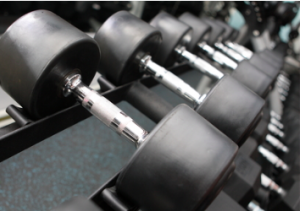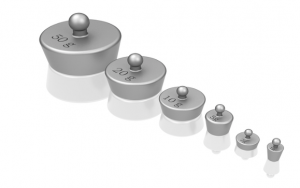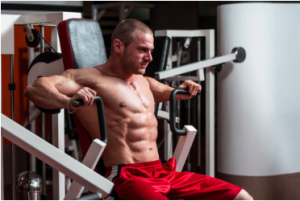Glutamine
Almost everyone is familiar with the idea that glutamine is great for muscle recovery, but it is often under utilized ...

This inexpensive amino brings with it increased testosterone production & recovery making it a valuable adtiion to your supplement stack. ...
In an industry largely built on shams and deception, how can you be sure you’re not wasting your hard-earned cash ...
In case you missed it, catch Part 1 here. Now, during my prep for this meet I had the best training ...
Question: “Is there an optimal amount of Time Under Tension (TUT) to shoot for each set?” When trying to maximize ...
When it comes to “Junk” food. First we must clarify what “junk” is. Carbohydrates themselves for example don’t make you ...
Part 2 of good cop versus bad cop in the fat loss hunger wars - this time we’ll focus on ...
In an industry largely built on shams and deception, how can you be sure you’re not wasting your hard-earned cash ...
The ‘BURN’... both masochistically loved and hated at the same time. We’ve all felt it. We’ve all heard varying opinions ...
Question: “What are neurotransmitters and why are they important? How can I optimize them to improve my training?” Your neurotransmitters ...
Grocery shopping with health and fitness in mind can be a hassle. That is why in order to to minimize ...
For all of us trying to reach the full potential of our health, it is important to be sure that ...
With repeated exposure to more and more demanding workouts, our muscles are forced to respond by becoming larger and stronger. Eventually our muscles adapt and our old training weights become relatively lighter. This prompts us to increase our weights so as to force further adaptation. A failure to do so may result in training stagnation whereby our progress plateaus; exactly the opposite of what all hard training athletes want! So we simply up the poundage and repeat, right? Not so fast!
When planning any resistance training program we must consider three important variables: volume (how much work comprises each session), frequency (how often we schedule our workouts), and intensity (the degree to which we physically exert ourselves). As many a bodybuilder has learned the hard way, it is not so much the volume and frequency of training that will produce the fastest and most impressive results, but the intensity that is mustered during each training session. While increasing intensity by lifting heavier is the primary governing factor for procuring gains, this must be balanced with the precise planning of volume and frequency to optimize our training.
Progressive Overload
The ongoing pursuit of ever-greater levels of bodybuilding success is inextricably linked to the critically important principle of progressive overload (Progressive ‘Tension’ oOverload would be a more accurate term). Aspiring bodybuilders often get stuck in a training rut; content to do the same exercises and lift weights that are barely heavy any more, they, unsurprisingly, experience little progress beyond the initial newbie gaining-period (typically the first year of training). The fact remains that to grow, you must stress the muscles in such a way that they demand adaptation and growth.
Our first training plateau often signals the need to begin progressively overloading our muscles with tension. By centering our training on the importance of progressive tension overload we will not only trigger growth, but also stimulate the development of stronger bones, tendons, ligaments, cartilage, and increased muscular blood flow – all of which, in unique ways, facilitate greater muscle gains. In addition to moving more iron, we may also progressively overload our muscles by building a stronger mind/muscle connection, increasing training duration and volume, and compounding the intensity of our training sessions.
Mind/Muscle Connection
 Another key benefit of progressive overload is the stimulation of the nerve connections between the brain and the muscles (which become more responsive with repeatedly and intensive bouts of training). It is said that the brain is the strongest muscle we have. Whoever said this clearly does not fit the profile of which they speak (the brain is an organ, not a muscle!). Nevertheless, the brain can be trained, and in order to fully stimulate our muscles in a progressive manner we must first be in the right mindspace. Simply going through the motions will not do the job, irrespective of how much weight we are able to add to the bar. In fact, without working to establish an optimal mind/muscle connection, any attempt at progressively overloading our muscles will prove fruitless.
Another key benefit of progressive overload is the stimulation of the nerve connections between the brain and the muscles (which become more responsive with repeatedly and intensive bouts of training). It is said that the brain is the strongest muscle we have. Whoever said this clearly does not fit the profile of which they speak (the brain is an organ, not a muscle!). Nevertheless, the brain can be trained, and in order to fully stimulate our muscles in a progressive manner we must first be in the right mindspace. Simply going through the motions will not do the job, irrespective of how much weight we are able to add to the bar. In fact, without working to establish an optimal mind/muscle connection, any attempt at progressively overloading our muscles will prove fruitless.
To engage as many muscle fibers as possible, proper execution of all training movements requires mentally engaging before lift-off. As a first step we must visualize the successful completion of the set at hand; mentally rehearse the actions we must take to maintain tension and excellent form, and imagine all fibers firing in concert as our muscles lengthen and contract under the training load. Block out all distractions and focus completely on each rep. Too many people become obsessed with pushing maximal weights, thinking that they are overloading specific muscles when, in reality, all they are doing is placing excessive tension on their joints and dispersing the stress across a range of muscle groups.
All physical movement is controlled by the brain. Upon signaling our muscles to contract, the brain releases a chemical neurotransmitter called acetylcholine which, having crossed the neuromuscular junction to bind with receptors on the surface of muscles fibers, produces muscular contraction. By improving our mind/muscle connection we increase the number of muscle fibers that are stimulated by this process. The more we enhance the communication between our brain and our muscles the more forcefully we may contract each targeted muscle, and the greater overload we place on our muscles.
Strength
Provided we adhere to the fundamental training mandates of adequate time under tension, sound form, and continuous tension on the muscles we are working, we as bodybuilders, are obliged to lift as much weight as humanly possible. There is no way around it: to get big, we must lift big. Greek wrestler of the Sixth  Century B.C., Milo of Croton, as legend has it, was the first person to successfully demonstrate simple progressive overload. A true old-school bodybuilder, Milo carried a calf on his shoulders every day. As the calf grew into a full-sized steer, Milo gradually became larger and stronger. His body was continually forced to adapt to an increasingly heavier load. Though not to be recommended as a training modality for today’s aspiring iron elite (who are more encouraged to lift their beef one forkful at a time), Milo’s strategy, as many strength experts claim, is as sound today as it was over two thousand years ago. Sure, lifting progressively heavier weights will promote greater muscle gains over time, however, we must also remember that muscle building does not occur in a linear fashion: rather, progress comes in waves; while one week we may see a hefty strength increase, it may take another four months, or longer, to see any progress at all. Building muscle is not as simple a process as lifting a heavy weight and expecting immediate results. But provided we are consistent, the results will come.
Century B.C., Milo of Croton, as legend has it, was the first person to successfully demonstrate simple progressive overload. A true old-school bodybuilder, Milo carried a calf on his shoulders every day. As the calf grew into a full-sized steer, Milo gradually became larger and stronger. His body was continually forced to adapt to an increasingly heavier load. Though not to be recommended as a training modality for today’s aspiring iron elite (who are more encouraged to lift their beef one forkful at a time), Milo’s strategy, as many strength experts claim, is as sound today as it was over two thousand years ago. Sure, lifting progressively heavier weights will promote greater muscle gains over time, however, we must also remember that muscle building does not occur in a linear fashion: rather, progress comes in waves; while one week we may see a hefty strength increase, it may take another four months, or longer, to see any progress at all. Building muscle is not as simple a process as lifting a heavy weight and expecting immediate results. But provided we are consistent, the results will come.
Frequency
For each trainee there is a training frequency which sparks continuous gains but which does not venture into overtraining. For those of us who are not experiencing an optimal response/adaptation to our imposed training loads, we may need to include an extra session or two in our routine. Most importantly, we must determine the ideal biological ceiling for exercise frequency; a frequency threshold beyond which further weekly training sessions may not produce additional growth. Keep in mind that frequency will pay dividends only when we are already generating the maximum amount of training intensity possible. If we feel we can do more of the same, we should do so. But we must also closely monitor our progress and reduce training frequency if results are not forthcoming.
It is important to note here that the decreased use of our muscles may result in an incremental loss of muscle size and strength. This so called reversibility effect, in its extreme form, is encountered whenever a lifter stops training: muscles shrink and strength gains diminish. Less severely manifested when training frequency is too low, reversibility (or the detraining effect) may result in training stagnation despite regularly training with great intensity. Including an extra session per week may provide the progressive overload needed to kickstart further progress.
Volume
A further way to encourage progressive overload is to increase our training volume. The best way to do this is to increase our reps and sets, thus increasing total training time. Back in bodybuilding’s Golden Era of the late 60s to mid-70s, the champions of the day, including Arnold and company, would train for 2-3 hours, sometimes twice a day. Today such duration would be tantamount to bodybuilding  sacrilege and be condemned as overtraining. Because training time is a precious commodity for many and because great efforts are often made to schedule workout sessions,we must make the most of the time we have to fully blitz our muscles.
sacrilege and be condemned as overtraining. Because training time is a precious commodity for many and because great efforts are often made to schedule workout sessions,we must make the most of the time we have to fully blitz our muscles.
Though you may have been conditioned into thinking that any more than 3-4 sets per exercise will result in a loss of muscle tissue and that reps beyond the coveted hypertrophy range of 8-12 are wasteful, our muscles may beg to differ. Sometimes what they may need is that extra training volume. By extending training duration we can help to overload our muscles to the fullest extent.
Advanced Techniques
Aside from increasing the weights we lift and/or the duration and frequency of our training, we may additionally boost workout intensity by incorporating specific intensity methods, with or without increasing the resistance.
Boosting training intensity can be done in a number of ways. The easiest and most common of these is to decrease rest between sets. This one simple strategy can significantly improve our ability to progressively overload our muscles. Try reducing your rest periods to one minute or less and see for yourself.
Supersets, giant sets, drop (or descending) sets, negative or forced reps, rest/pause, running the rack, partials, and pre-exhaust may all be employed (not during the same session!) to force continued adaptation and build more muscle. Pick one or two from the list above and use them to intensify your next training session. Remember, intensity methods are hard on the body, so be sure to use them sparingly (not on every exercise!).
Small steps
The best and safest way to employ progressive overload for bodybuilding purposes is to make small weight adjustments over time while working to boost overall training intensity. Beginners and advanced lifters alike vary greatly in their strength levels due to nervous system efficiency, difference in leverages, muscle fiber composition, muscle belly length, etc.; therefore general recommendations are impossible to make here. Suffice to say, beginners must start with the heaviest weight possible that allows perfect form. Excellent training technique is essential when seeking to progressively overload our muscles. Increasing training weights by relaxing our form cannot be considered progressive overload. It could however be considered a sure path to injury.
 For some of the more complex movements, where proper full range technique may take considerable time to develop, progressive overload may comprise maintaining a particular weight while gradually improving range of motion week by week. Completing the exact same workout you did a week ago could be considered progressive overload provided overall training technique is gradually improved upon. That’s because, through proper execution, we are better able to tax the neuromuscular system to spur growth.
For some of the more complex movements, where proper full range technique may take considerable time to develop, progressive overload may comprise maintaining a particular weight while gradually improving range of motion week by week. Completing the exact same workout you did a week ago could be considered progressive overload provided overall training technique is gradually improved upon. That’s because, through proper execution, we are better able to tax the neuromuscular system to spur growth.
For beginners, it is essential that full range of motion and perfect technique are established and ingrained before addressing any other aspect of progressive overload (training load, intensity methods and so on). Improved execution might just be the most important progressive overload principle of all.
Moral Of The Story
As legendary pro bodybuilder Ronnie Coleman is fond of saying, “If you always do what you have always done, you will always get what you have always got”. In this simple statement, is the essence of progressive overload as it relates to building muscle: to become bigger and stronger one must try new things. We may work our biceps equally hard with the same training weights for the next 1000 sessions but we will fail to increase their size by even one centimeter. By consistently overloading our muscle, however, we are assured continued success.
 Unlike in the days of old where farmyard animals doubled as resistance to build ‘no bull’ physiques, nowadays weights distributed across bars of varying shapes and sizes are used to progressively overload our muscles. Say a lifter begins their foray into muscle building courtesy of the humble bench press among other key mass building movements. Once a weight that was initially pressed with great difficulty becomes relatively easy, it is safe to say that his major upper body muscles (pecs, shoulders and triceps, in particular) have adapted to the demands that were originally placed upon them. Since these muscles have no further reason to become larger and stronger, they stop growing. They will remain at their present size and strength until they are again challenged with sufficient overload. So to keep the muscle piling on we must continue to get stronger. Since we clearly cannot add weight to the bar with each workout for the rest of our training days, a physiological impossibility that would have us benching in the neighborhood of several thousand pounds by the time we are ready call it quits, instead, we must aim to overload our muscle in every which way we can; be it weight, volume, frequency, or intensity.
Unlike in the days of old where farmyard animals doubled as resistance to build ‘no bull’ physiques, nowadays weights distributed across bars of varying shapes and sizes are used to progressively overload our muscles. Say a lifter begins their foray into muscle building courtesy of the humble bench press among other key mass building movements. Once a weight that was initially pressed with great difficulty becomes relatively easy, it is safe to say that his major upper body muscles (pecs, shoulders and triceps, in particular) have adapted to the demands that were originally placed upon them. Since these muscles have no further reason to become larger and stronger, they stop growing. They will remain at their present size and strength until they are again challenged with sufficient overload. So to keep the muscle piling on we must continue to get stronger. Since we clearly cannot add weight to the bar with each workout for the rest of our training days, a physiological impossibility that would have us benching in the neighborhood of several thousand pounds by the time we are ready call it quits, instead, we must aim to overload our muscle in every which way we can; be it weight, volume, frequency, or intensity.
References
American College of Sports Medicine position stand. Progression models in resistance training for healthy adults. Med Sci Sports Exerc. 34(2):364-80, 2002 Feb.
Baechle, T. R., Earle, R. W., (Eds.). (2000). Essentials of Strength Training and Conditioning (2nd ed.). Champaign, IL: Human Kinetics.
Kavanaugh, A. The Role of Progressive Overload in Sports Conditioning. NSCA’s Performance Training Journal. [Online] http://klss.cksd.wednet.edu/teachers/chrish/Articles/The%20Role%20of%20Progressive%20Overload%20in%20Sports%20Conditioning.pdf retrieved on 10.10.14
Lifestyle and Strength. Continuous Muscular Development – Progressive Overload. [Online] http://lifestyleandstrength.com/muscular-development-progressive-overload/ retrieved on 10.10.14
Pearson, D., Faigenbaum, A., Conley, M., & Kraemer, W. J. (2000). The National Strength and Conditioning Association’s Basic Guidelines for the Resistance Training of Athletes. Strength and Conditioning Journal, 22(4): 14 – 27.